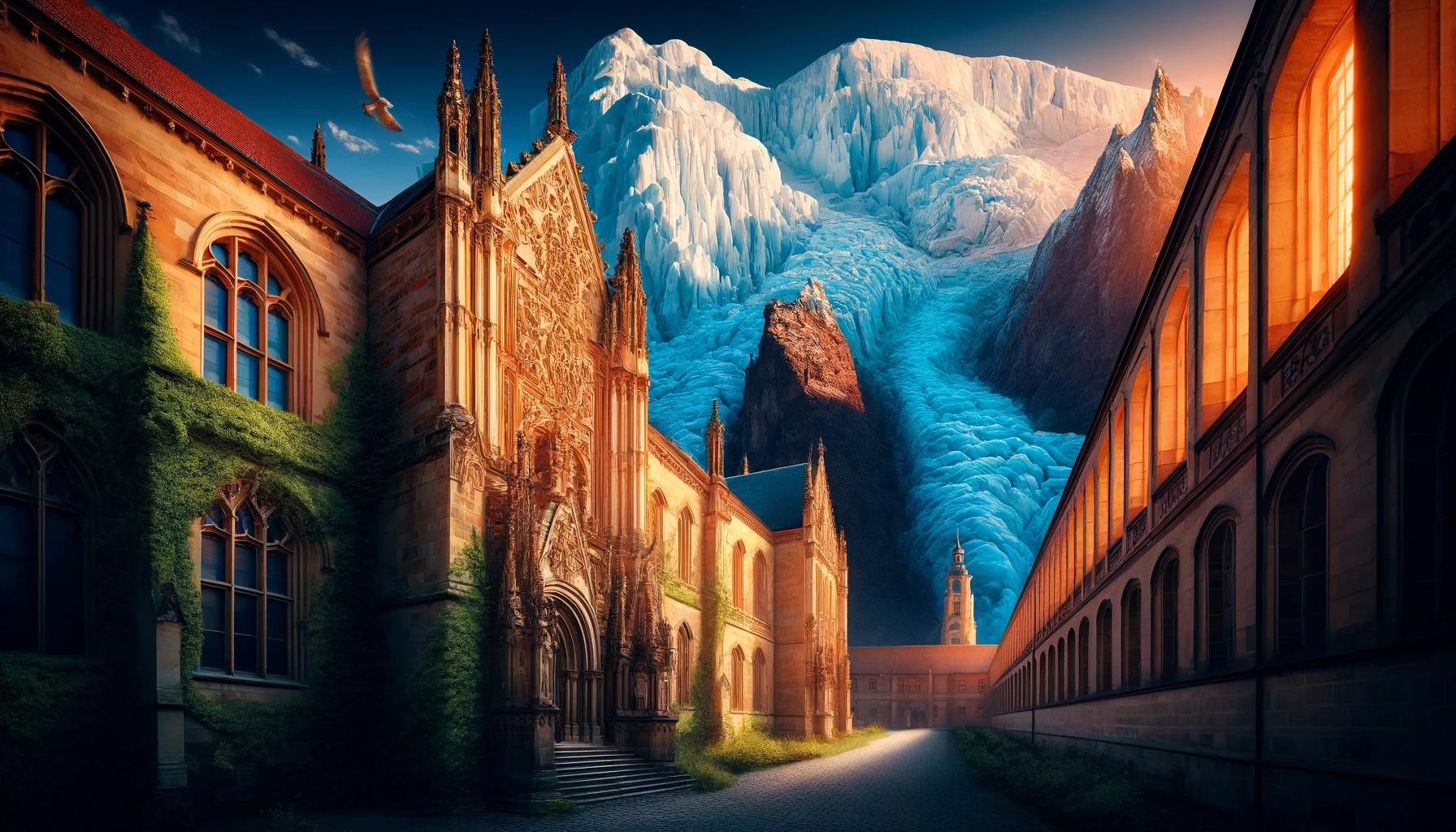Let's talk about glaciers. They are old, cold, and move very, very slowly. From the perspective of a single human lifetime, they hardly move at all. But when they do, they transform landscapes—removing entire hills, carving deep valleys, and creating instagramable lakes. They also serve as natural archives, capturing shifts in climate, flora, and fauna.
In many ways, higher education institutions resemble glaciers. They archive human history in their vast libraries and shape the cultural and intellectual landscapes of our societies. Among the oldest organizations in existence, some have been around longer than most nation-states. And they change very, very slowly. Yet, when viewed over the appropriate timeline, even the most dynamic startups pale in comparison to the dramatic evolution that higher education has undergone since its inception over a millennium ago.
In this post, I present a brief, and inevitably incomplete, history of Western higher education. My aim is to debunk the common belief that it has hardly changed at all, and to explain the origins of the nostalgic sentiments that sometimes circulate university campuses.
Medieval Beginnings: The first European universities were established in the Middle Ages, with the University of Bologna, founded in 1088, often considered the oldest. These early universities, including the University of Paris and the University of Oxford, were initially created as guilds of students and teachers and focused primarily on liberal arts, theology, law, and medicine. They followed a curriculum based on lectures and disputations.
Renaissance and Reformation: The Renaissance brought a renewed interest in classical knowledge and humanist ideals, which influenced universities to broaden their curricula. During the Reformation in the sixteenth century, universities also became centers for religious debate and reform, influencing theological study and the training of clergy.
Enlightenment Changes: The Enlightenment in the seventeenth and eighteenth centuries led to significant changes in universities. There was a greater emphasis on reason and scientific inquiry, which saw the rise of faculties dedicated to science and technology. This period also saw the foundation of new universities which were more secular in their outlook.
The Humboldtian Model: In the early 19th century, Wilhelm von Humboldt introduced a model in Germany that redefined universities. His ideas emphasized the unity of research and teaching, academic freedom, and the holistic development of students (so-called Bildung). This model became the foundation of the modern research university.
Expansion and Specialization: Throughout the 19th and 20th centuries, universities expanded rapidly. They began to serve not just the elite but also the middle classes, driven by a growing belief in education as a right and an economic necessity. Universities multiplied, and access to higher education broadened significantly, driven by public investments and new technologies.
Contemporary Developments: Today, universities face new challenges and opportunities, including globalization, digitalization (the Internet, artificial intelligence), and calls for greater inclusivity and sustainability. They not only act as centers of learning and research but also address global issues and serve as engines of social, economic, and technological development.
Higher education institutions are constantly in motion. Today, they are no longer just ivory towers for the elite but have taken on numerous vital societal roles. They have become centers of new knowledge production, personal and professional development, and societal impact. Their pace of change might be glacial, but much like the rapid disappearance of glaciers signaling negative changes in our natural ecosystem, the resilience and adaptability of higher education institutions could be considered a sign of a healthy society. It may sounds odd coming from someone who has spent his entire career in the field of education innovation, but let's keep them this way.
This post and image were created with the help of ChatGPT Plus.
